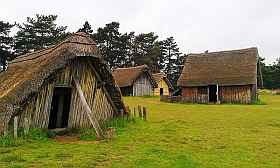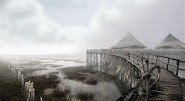A Hillfort Near You

Hillforts pepper our hills, maybe around four thousand across the country. At least we have called them hillforts. But are they? It seems that they not always on hills and probably not usually forts. The label was pinned on them by Sir Mortimer Wheeler, one of the most revered pre-history pundits of the 20th century and a former Brigadier in the Army so he might just have seen what he was programmed to see! Sir Mortimer Wheeler Gandalf in the City? In my own search for a sound basis for generalisation, I drew on lots of visits, slogged my way through a fat tome on hillforts generally, waded through archaeology papers in the British Library, scaled a mound of local landscape history books and tiptoed into the prehistory nerd websites. After all that, they remained inscrutable. Some do seem to have seen conflicts. We are confident that Cadbury in Dorset saw battles with the Romans. Others were clearly built with defence in mind, for instance by adding a...


